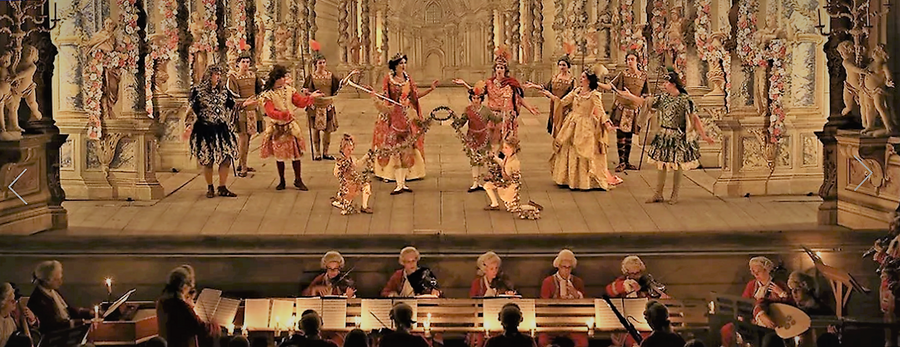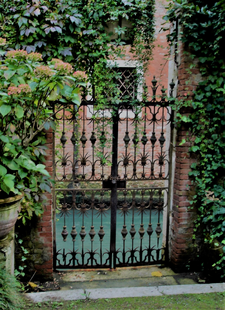Venetian Opera Productions
Documentation for https://venop.ccarh.org
Venetian Opera Productions: A searchable calendar
When the first opera was given at the Teatro San Cassiano in 1637, no one anticipated that the novel species of entertainment it offered would be durable. Its predecessors were occasional works, given privately in great splendor for weddings and other rites of passage of important figures. From the start, Venetian theaters were carved out of palaces of noble families and run by impresari who leased boxes and sold tickets to a paying public. Many were long-term lessees of theater boxes. This steered the future course of the genre on a new trajectory.
As a venue for such entertainment, Venice did not have a lot of competition for several decades, but new theaters accumulated. Close historical analysis suggests that the enterprise as a whole never became self-funding. Yet the precarious operation of most theaters did not diminish the popularity of the genre. Opera constantly responded to challenging circumstances. This website enables users to investigate how and why this happened over the core century (1660-1760) of the dramma per musica.
Quick start guide
1. Select or deselect desired fields.
2. Modes of viewing:
- To browse, scroll through the entire corpus.
- To limit searches to a restricted period of years, use the Min. and Max. delimiters (boxes).
- To reorder records (e.g. to view all the works by one composer or theater), click on column header (top row). To return to original view, click refresh icon on browser.
3. To return to this documentation view, click on the "?" in upper left corner of table view.
The historical phenomenon of opera, then and now
Today most professionally-staged operas form part of a standard repertory that younger singers aspire to master. With few exceptions, the score, the roles, and the orchestra vary little from decade to decade if financial support is adequate. Title selections change from year to year and entirely new works are introduced as budgets permit, but most choices are drawn from a pool of well known works. More likely changes may concern a manner of staging, scenery, costumes, or interpretation.
The sheer quantity of works produced in Venice between our target years—1660 to 1760—offers a striking contrast to the few dozen works in core repertories today. Not all the differences are as great as they at first appear. After 1700 new titles could be slapped onto familiar plots. The practice of "revise and disguise" produced unpredictable results. Some possible outcomes include:
- combination of existing arias combined with new recitatives;
- addition, subtraction, or modification of one part of a work;
- new or revised arias for one cast member;
- insertion of arias detached from a previous work in a new work.
The printed text prepared in advance for an opera might not fully correspond to the work as staged. Scores were circulated only in manuscript. By tracing productions, rather than works per se, we can associate a significant amount of rarely seen commentary with perfunctory title information to better understand the constantly shifting values and mutable practices that supported performance.
Essential parameters of Venetian opera
From 1660 until the middle of the next century Venice usually had six theaters operating, but these were paramount: San Cassiano (intermittent, from 1637), SS. Giovanni a Paolo (1639-1699; 1714-15), San Salvatore (1661-1700, intermittent from 1727), Sant'Angelo (1677-intermittent after 1748), and SS. Giovanni Grisostomo (1678-1751). The others were less regular, or switched between opera and commedia, or lasted only a few years. Productions rarely ran for more than three weeks. Performances were not necessarily given every night. With regard to opening dates [Sorting Date, some accommodation between theaters could occur, although opening night collisions were often avoided. Ticket prices for an opening performance might cost twice the normal amount.
Some ebbing and flowing of theatrical activity was associated with wars, pestilences, and fluctuating economic conditions. Venice was engaged in a war in the Aegean—the "War in Candia"—from 1645 to 1669. After 1700, the more stable theaters could produce three works in a year with a late Easter, but this was rare until the start of spring opera in the 1720s. Public operas were permitted only in periods of time uncontested by the Church and explicitly permitted (by proclamation) by the Venetian Republic. The total number of days when opera was permitted gradually increased over the course of the century represent.
Going to the opera in 1660 and 1760
The cultural distance between the years around 1600 and our own times is considerable. In early Venetian theaters, important public figures rented or subleased a box for a season (or a lifetime) and bought a libretto at the door to follow the action onstage. Performances were permitted for a maximum of four hours from sunset. Those lacking a box could rent a folding chair or stool for the parterre. A small orchestra sat in front of the stage. In many cases two harpsichordists were present—one to accompany the singers, the other to support the orchestra.

The delimiting dates of this table (1660-1760) mark the confines of a period during which a huge increase in productions forced a degree of predictability on patterns of performance, with significant implications for composers and performers. The same time-span also coincides with an abundance of minutely dated references to opera productions in weekly news-sheets, an under-the-radar source of local news conveyed (on paper) by vast networks throughout Europe. In the accumulation of their minutiae lies the resolution of many questions that are difficult to answer using standard historical resources. Because items were published weekly, they exclude all possibility of the misinterpretation of years, which contaminates all printed catalogues and bibliographies of Venetian opera.
When people went to the opera in Venice, they oten went in sizeable groups. Most attendees sat in a box to which they might carry drinks and other refreshments. One member of the group would buy a libretto at the door. A candle would be necessary to see the libretto: theaters were dark inside. (They were also prone to fires.) The impresario was responsible for lighting adjacent outdoor spaces, the stage, and the instrumentalists' pit. Attendees and personnel were expected to arrive by gondola. (See a remnant of San Cassiano's water-gate below.) A dusk-to-dawn curfew meant that streets were deserted.

By 1760 the audience for opera had changed considerably. The nobility was in decline. Many works might satirize bourgeoise traits in current culture such as speech, dress, or manners of behavior. Venice had to compete with its imitators in the realm of opera buffa. Pastorals were common in spring and autumn productions. Carnival remained the season of serious opera and noted singers, but fewer and fewer works were entirely new. The best known singers pursued opportunities abroad. Venues north of the Alps promoted spring and summer operas, while new theaters in central and northern Europe drew performers away from Italy.
Despite general acknowledgement of the historical importance of Venetian opera collectively, only a handful of Baroque operas are performed today. The reasons are many: the lack of survival of musical sources, the paucity of modern editions for works that survive, the expense of staging long, elaborate works of earlier times, and the lack of training in Baroque performing techniques in many potential venues.
The repertory as a corpus
Many studies of Venetian opera focus on a single work, or perhaps a small group of works related by a common subject (Artaxerxes was a popular one) or a single composer (e.g., Legrenzi or Pollarolo) or a single theater (e.g. San Salvatore, also called San Luca in the context of comedy). By considering almost 900 works from a single century together, we can trace dozens of rich strands of data in clusters that are rarely acknowledged.
Almost every production included here has a verified exact date of opening (a sorting date). Sorting dates for titles are especially useful in calibrating other fields chronologically. On dating, see Dating Venetian Operas.
The 889 productions listed here consist largely of three-act drammi per musica. Details of the repertory as a whole were constantly shifting. The nature of the content in combination with precise dating information enables a wide range of approaches to interrogation. The century from 1660 to 1760 differs from adjacent segments of a longer chronology in ways that suggest the need for a slightly different range of fields from those displayed here. The 96 productions mounted between 1637 and 1659 involved fewer theaters, some traveling troupes, and a wide range of component items within works. The seasonal framework that stabilized in the 1660s enables use to evaluate elements of stability and change in ways that are not possible with sparser material. Elaborate prologues, which could involve separate casts and scenery, dominated some works. No system of patronage developed until the 1670s.
By the 1750s the status of the dramma per musica as a musical-literary genre was challenged by the rise of the opera buffa. Mainly Neapolitan, opera buffa won fans without the elaborate apparatus or complicated staging requirements of its serious rival. More and more audience members in Venice were from imperial precincts where stale formulas in dramatic plots were quickly eclipsed by the shorter, gayer content of these newer works. At the same time, the re-establishment of prose comedy, which was heavily dominated by Carlo Goldoni in the 1740s and 1750s, gave local audiences a range of choices. Goldoni's move to Paris in 1762 led to further fragmentation. The polemics of the "pamphlet wars" challenged the premises of opera in a noisy literary battle that spread from Paris to Venice.
Fields and filters
Despite the lack of musical familiarity today's public may have with titles from earlier times, a significant number of subjects recurred throughout the seventeenth and eighteenth centuries. Yesterday's work was not as highly regarded as today's. Ironically, the quest for novelty may have been conducive to the growing practice of disguising revised works by supplying new titles.
Before the alliance of public opera (1637) dramas with the dramma per musica, the most conspicuous model of what became "opera" was found in Florentine court intermedi. They in turn were considered appropriate for festive occasions, especially royal weddings. Such festivities could continue for days or weeks and often included many incidental entertainments. Aristocratic family odysseys en route to a wedding could also be dotted with an array of entertainments at each stop.
About Venetian Opera Productions
Website design and management: Craig Sapp
Content: Eleanor Selfridge-Field
Background image on search page: Fold-out etching by Domenico Rossetti from the libretto of Berenice vendicativa (music by Domenico Freschi, text by Gio. Maria Rapparini) premiered at the Villa Contarini on 8 November 1680 (Venice, Ca' Goldoni). Alvise Contarini served as doge from 1676 to 1684. The grandiose staging involved more than 400 supernumeraries plus 20 choruses, two lions, two elephants, and sixteen horses—four for Berenice's chariot and a dozen to cart prisoners. News reports relate that this entertainment, lasting for two weeks, was abruptly terminated by the collapse of a storage room for the chariots, which caused the panicked horses underneath to destroy some of the main props.